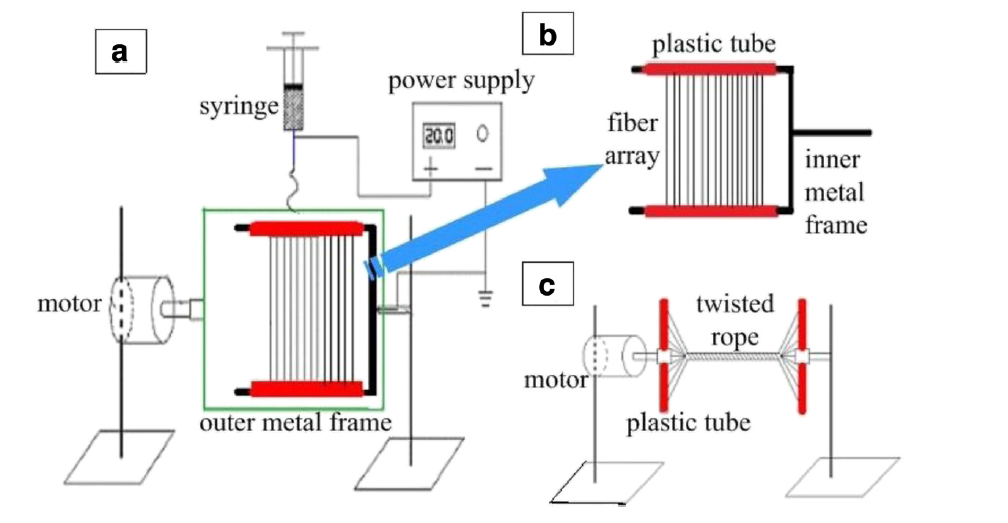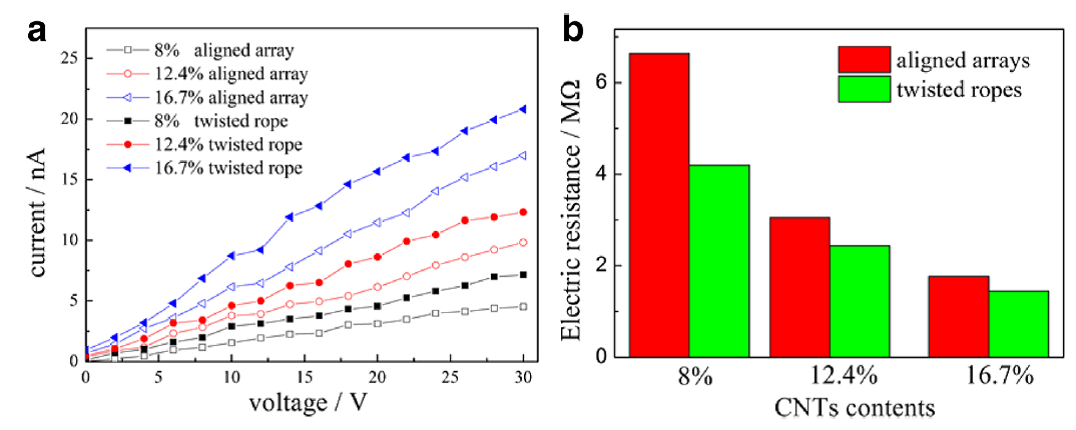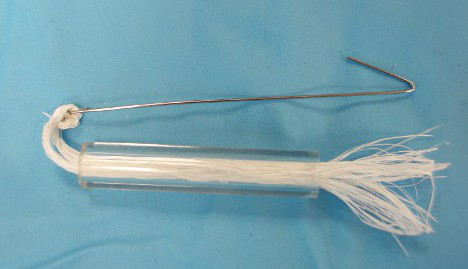▼ Reference
- Bosworth L A, Rathbone S R, Bradley R S, Cartmell S H. Dynamic loading of electrospun yarns guides mesenchymal stem cells towards a tendon lineage. Journal of the Mechanical Behavior of Biomedical Materials 2014; 39: 175. Open Access
- Koh HS. Polymeric Nanofiber Conduits for Peripheral Nerve Regeneration. PhD Thesis 2009 National University of Singapore. Open Access Li D, Pan X, Sun B, Wu T, Chen W, Huang C, Ke Q, El-Hamshary H A, Al-Deyab S S, Mo X. Nerve conduits constructed by electrospun P(LLA-CL) nanofibers and PLLA nanofiber yarns. J. Mater. Chm. B. 2015; 3: 8823.
- Lin D P, He H W, Huang Y Y, Han W P, Yu G F, Yan X, Long Y Z, Xia L H. Twisted microropes for stretchable devices based on electrospun conducting polymer fibers doped with ionic liquid. J. Mater. Chem. C 2014; 2: 8962.
- Liu H. Development and characterization of biodegradable sutures made of electrospun fibers with ampicillin. PhD Thesis 2008 The University of Georgia. Open Access
- Liu H, Leonas K K, Zhao Y P. Antimicrobial Properties and Release Profile of Ampicillin from Electrospun Poly(ε-caprolactone) Nanofiber Yarns. Journal of Engineered Fibers and Fabrics 2010; 5: 10. Open Access
- Lotus A F, Bhargava S, Bender E T, Evans E A, Ramsier R D, Reneker D H, Chase G G. Electrospinning route for the fabrication of p-n junction using nanofiber yarns. Journal of Applied Physics 2009; 106: 014303.
- Tsai C C and Kornev K G. Characterization of permeability of electrospun yarns. Langmuir 2013; 29: 10596.
- Zheng J, Yan X, Li M M, Yu G F, Zhang H D, Pisula W, He X X, Duvail J L, Long Y Z. Electrospun Aligned Fibrous Arrays and Twisted Ropes: Fabrication, Mechanical and Electrical Properties, and Application in Strain Sensors. Nanoscale Research Letters 2015; 10: 475. Open Access
▼ Credit and Acknowledgement
Author
Wee-Eong TEO View profile
Email: weeeong@yahoo.com
 ElectrospinTech
ElectrospinTech


